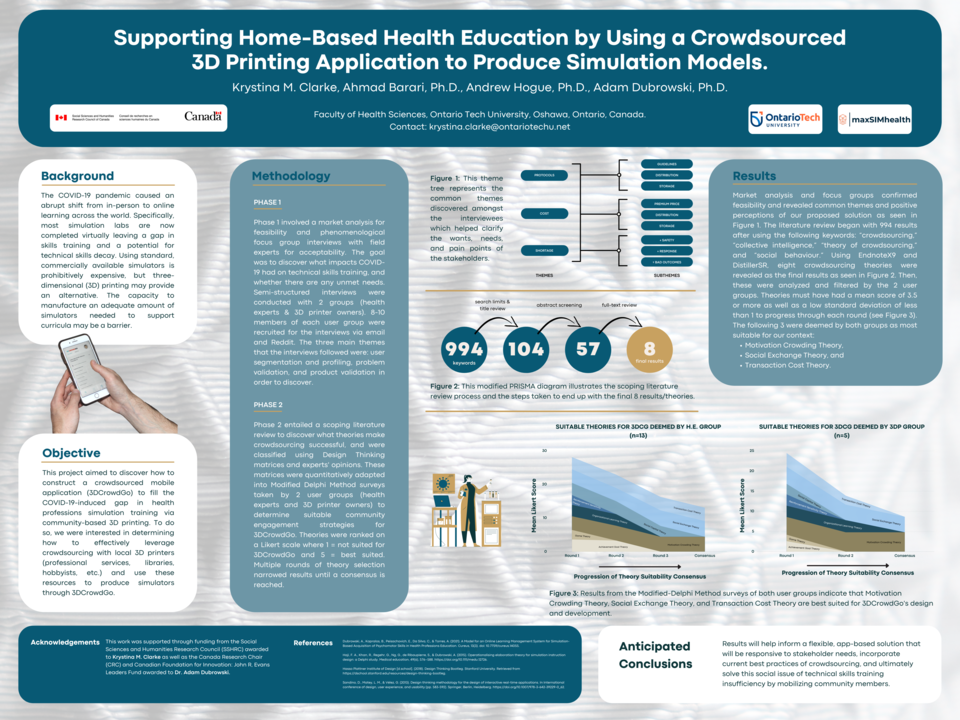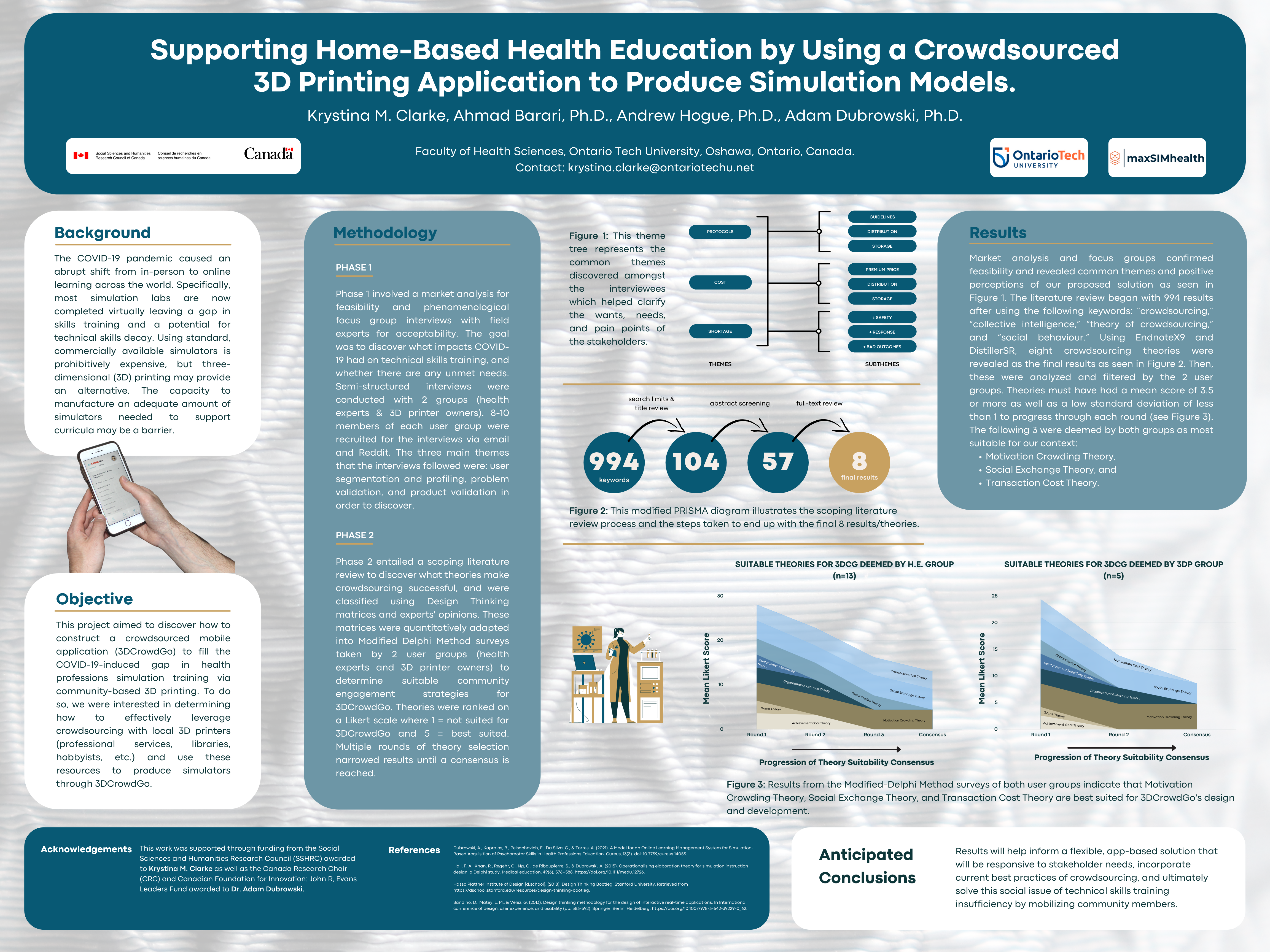Abstract
BACKGROUND: The COVID-19 pandemic caused an abrupt shift from in-person to online learning across the world. Specifically, most simulation labs are completed virtually leaving a gap in skills training and a potential for technical skills decay. Using standard, commercially available simulators is prohibitively expensive and three-dimensional (3D) printing may provide an alternative. However, the capacity to manufacture the adequate amount of simulators needed to support curricula may be a barrier.
OBJECTIVES: This project aimed to discover how to construct a crowdsourced mobile application (3DCrowdGo) to fill the COVID-19-induced gap in health professions simulation training via community-based 3D printing. To do so, we were interested in determining how to effectively leverage crowdsourcing with local 3D printers (professional services, libraries, hobbyists, etc.) and use these resources to produce simulators through 3DCrowdGo.
METHODS: Our investigation involved a 2-phased approach. Phase 1 involved a market analysis for feasibility and phenomenological focus group interviews with field experts for acceptability. Phase 2 entailed a scoping literature review whose results formed a Design Thinking matrix of crowdsourcing theories, which were then ranked via Modified-Delphi method surveys to determine suitable community engagement strategies for 3DCrowdGo.
RESULTS: Market analysis/focus groups confirmed feasibility and revealed common themes and positive perceptions of our proposed solution. The literature review revealed eight crowdsourcing theories, of which three were deemed most suitable for our context: Motivation Crowding Theory, Social Exchange Theory, and Transaction Cost Theory.
DISCUSSION: Results from all phases will be aggregated to develop this flexible, app-based solution that is responsive to stakeholder needs, incorporates current best practices and features of existing apps with similar purposes, and ultimately solve this gap with the delivery of home-based simulation by mobilizing community members. Proposed future work involves developing 3DCrowdGo rooted in these findings, conducting stakeholder user testing, and expanding production criteria beyond COVID-induced gaps.





